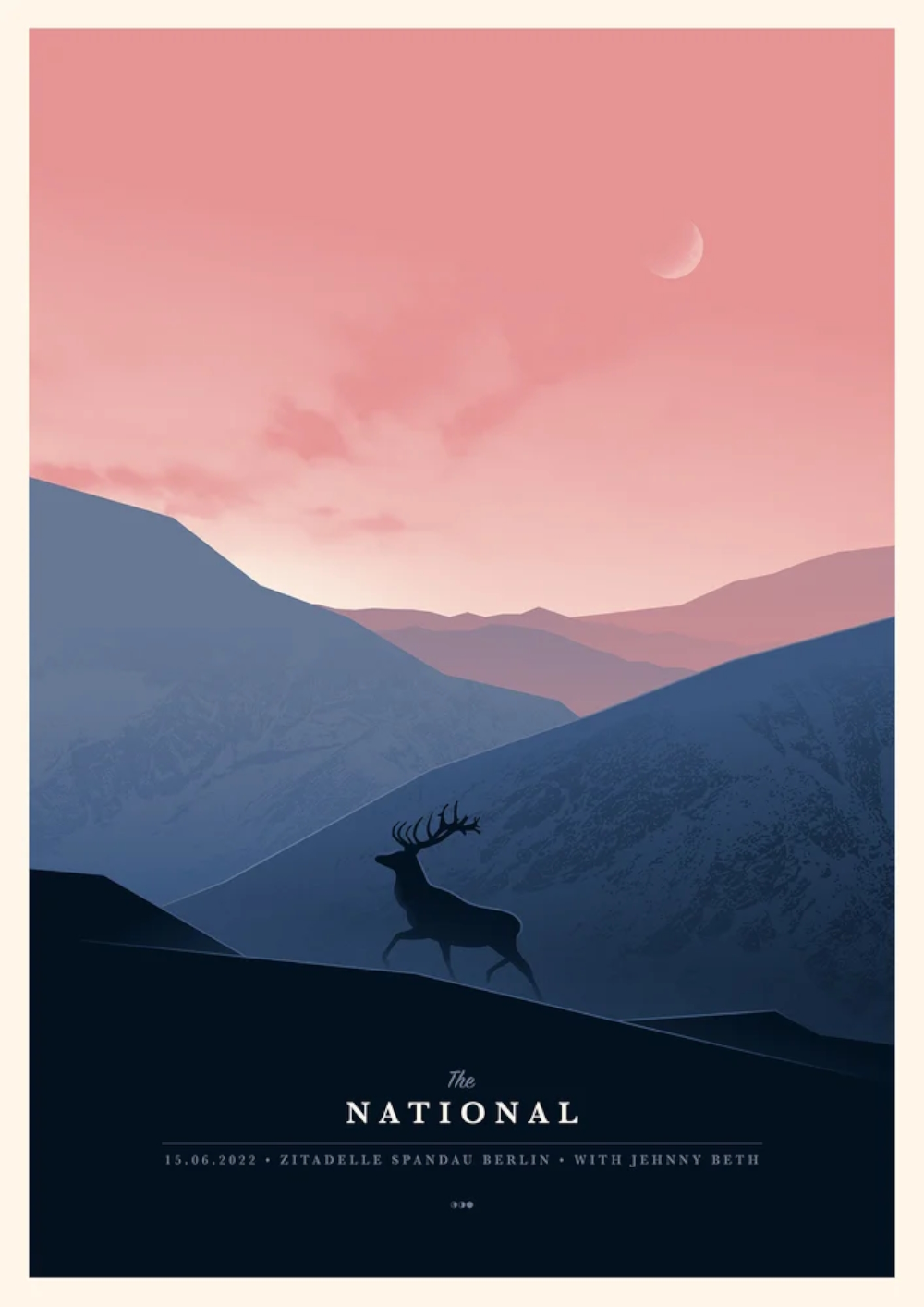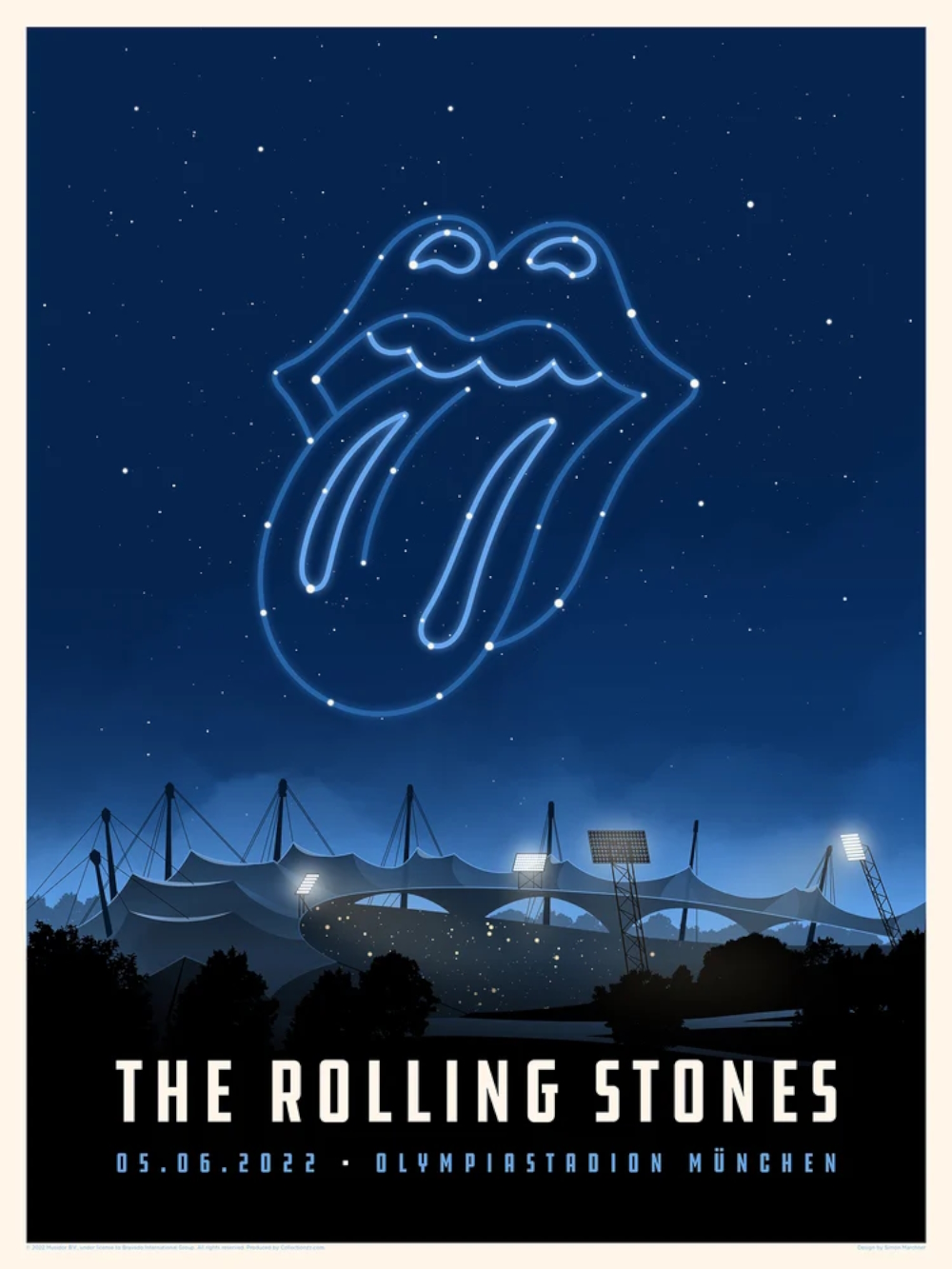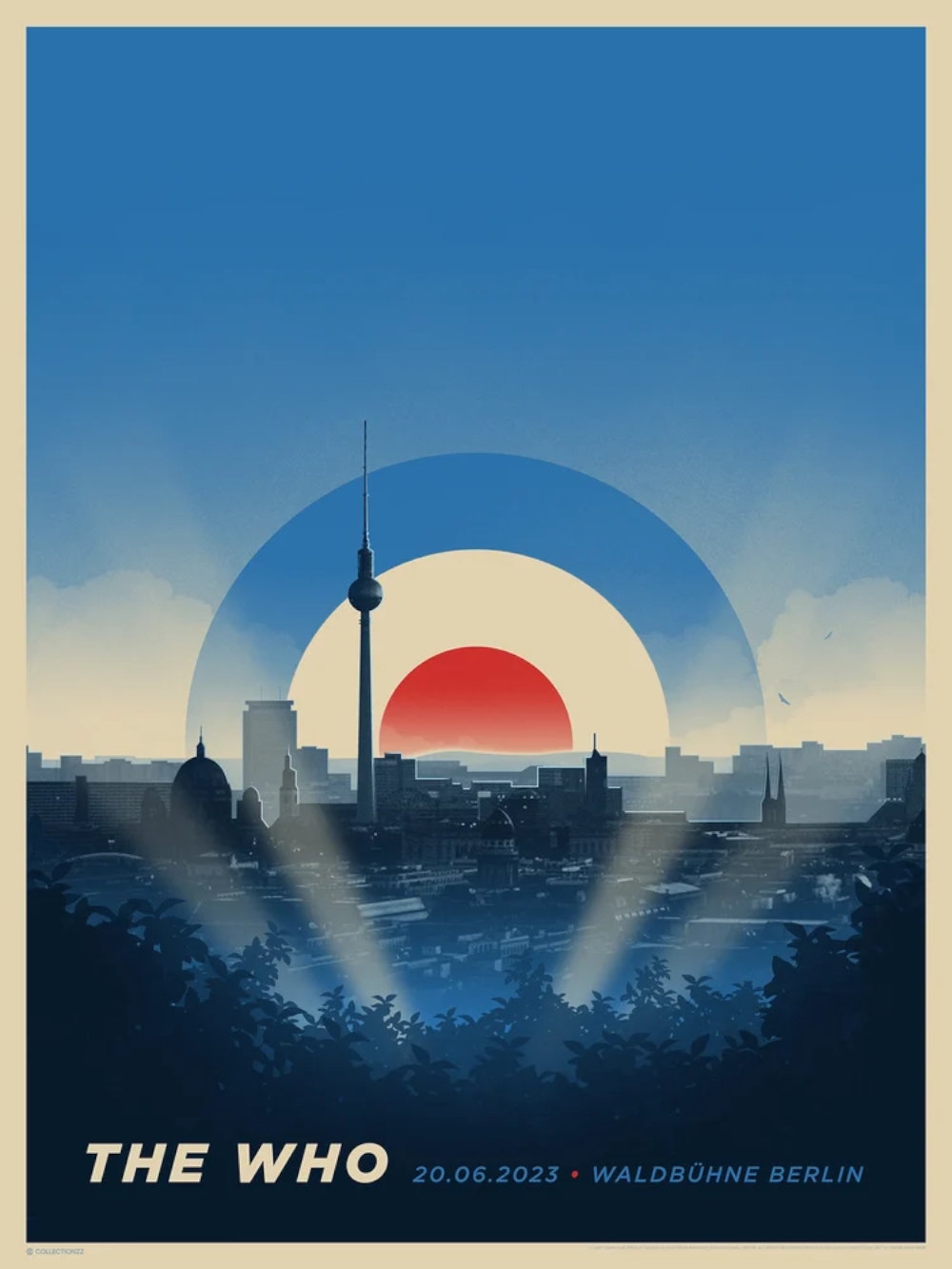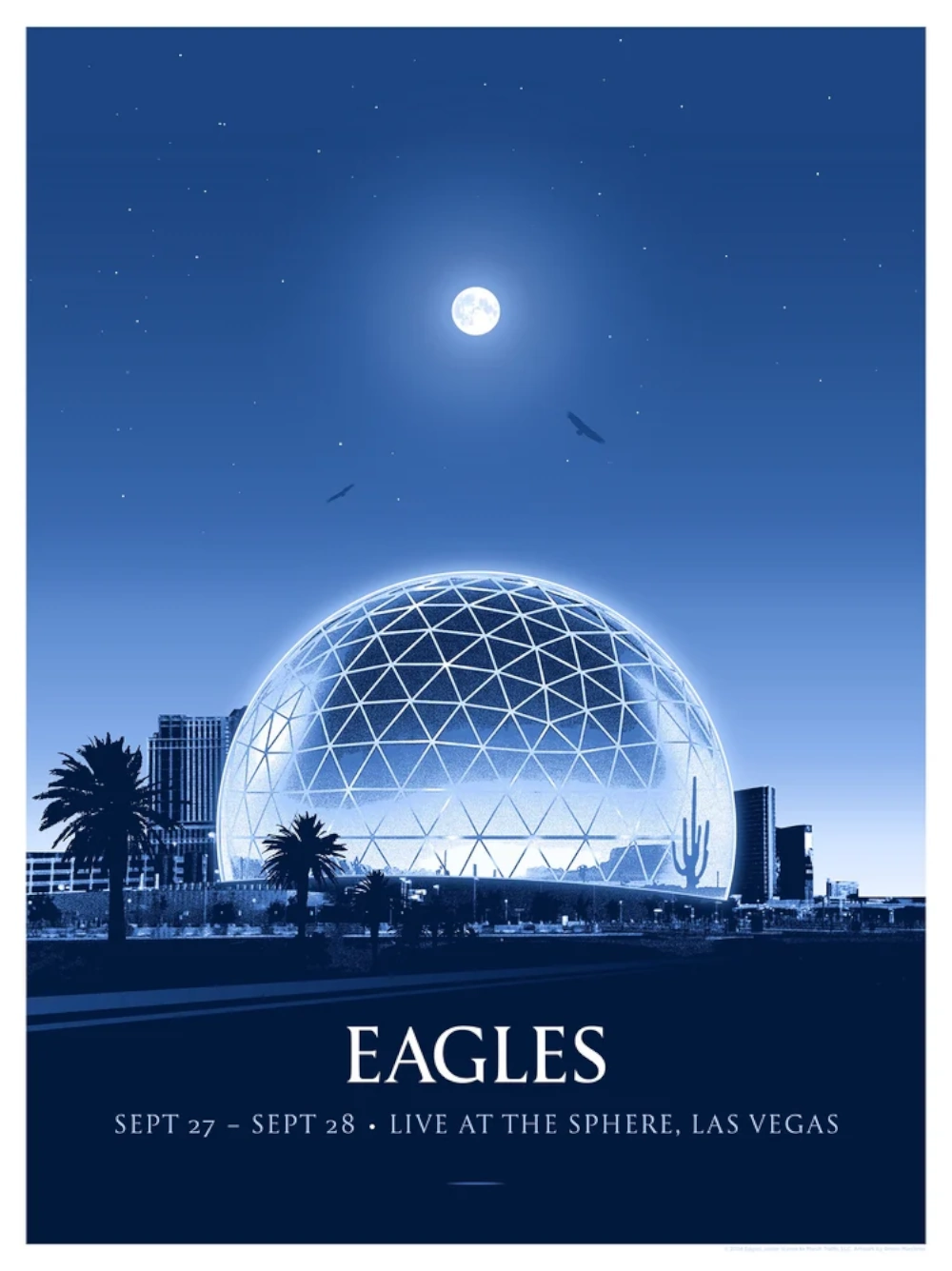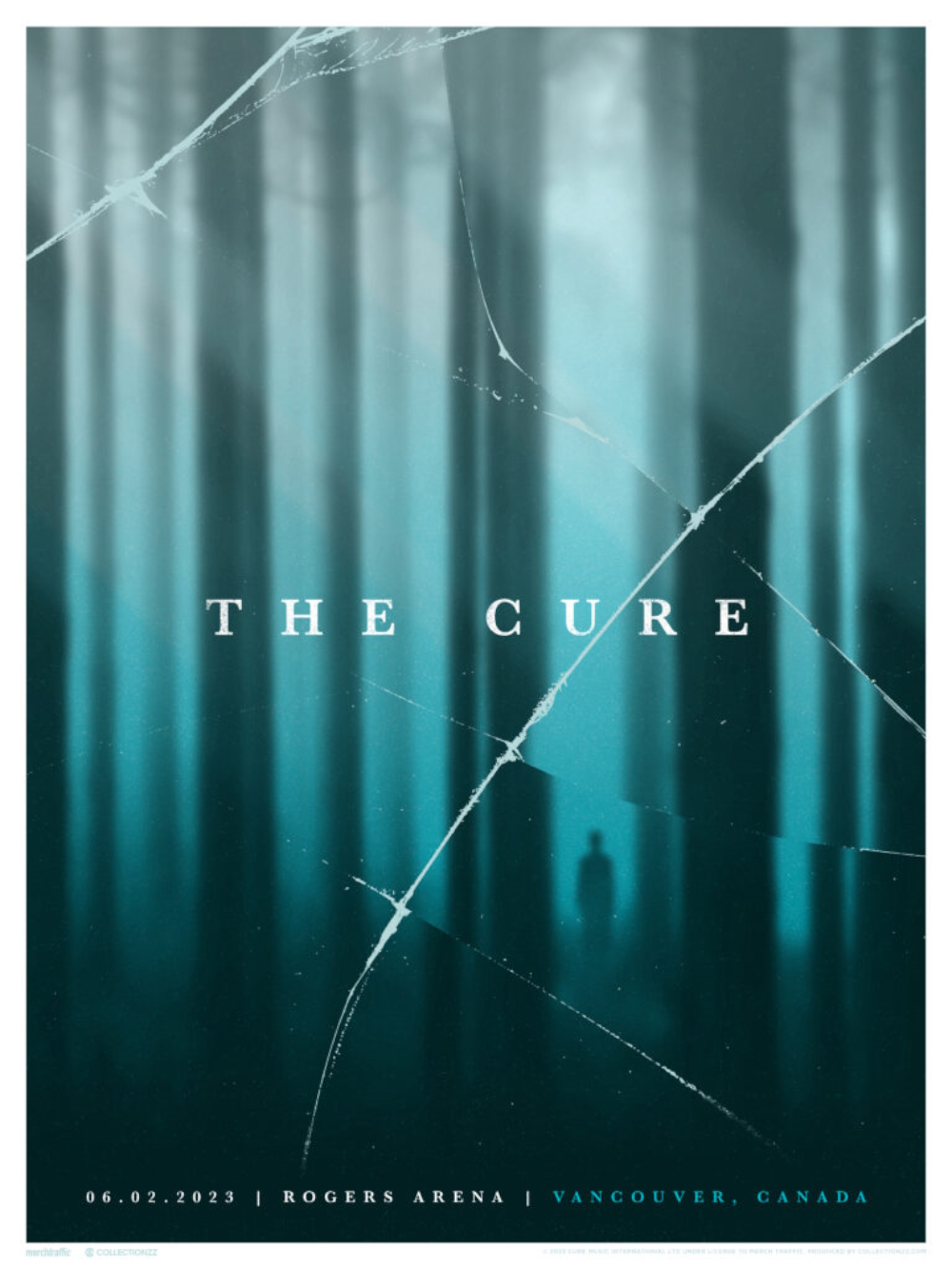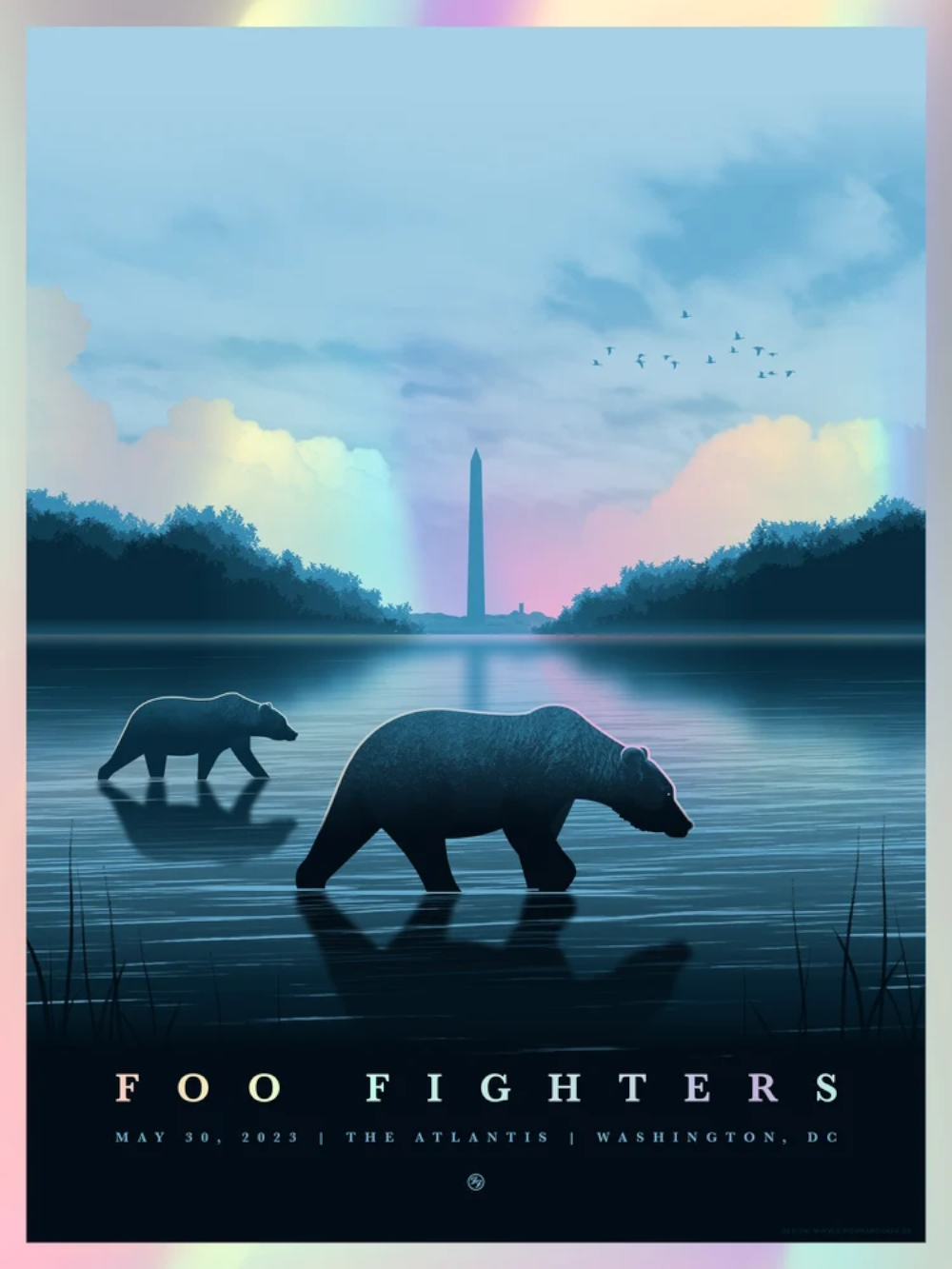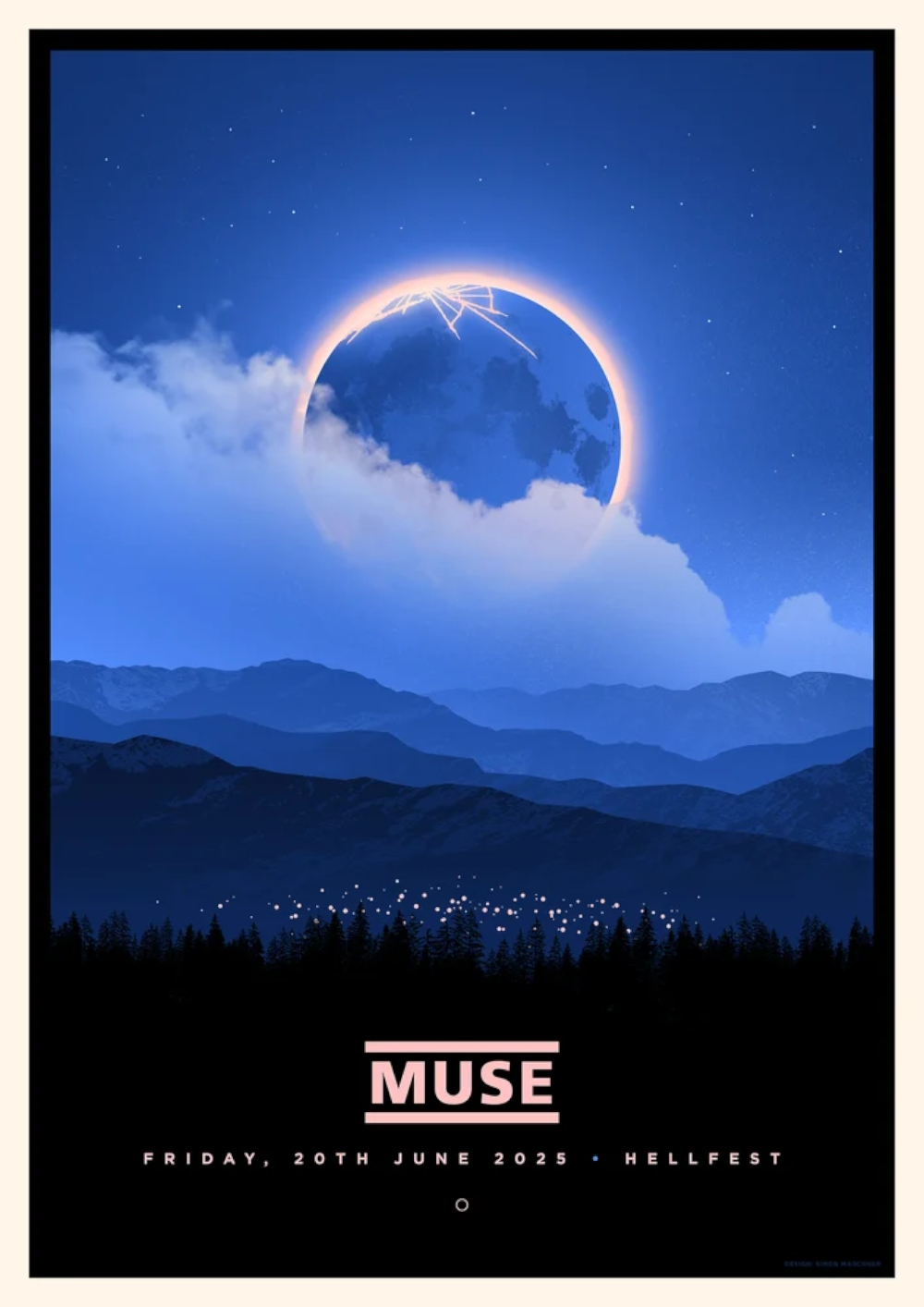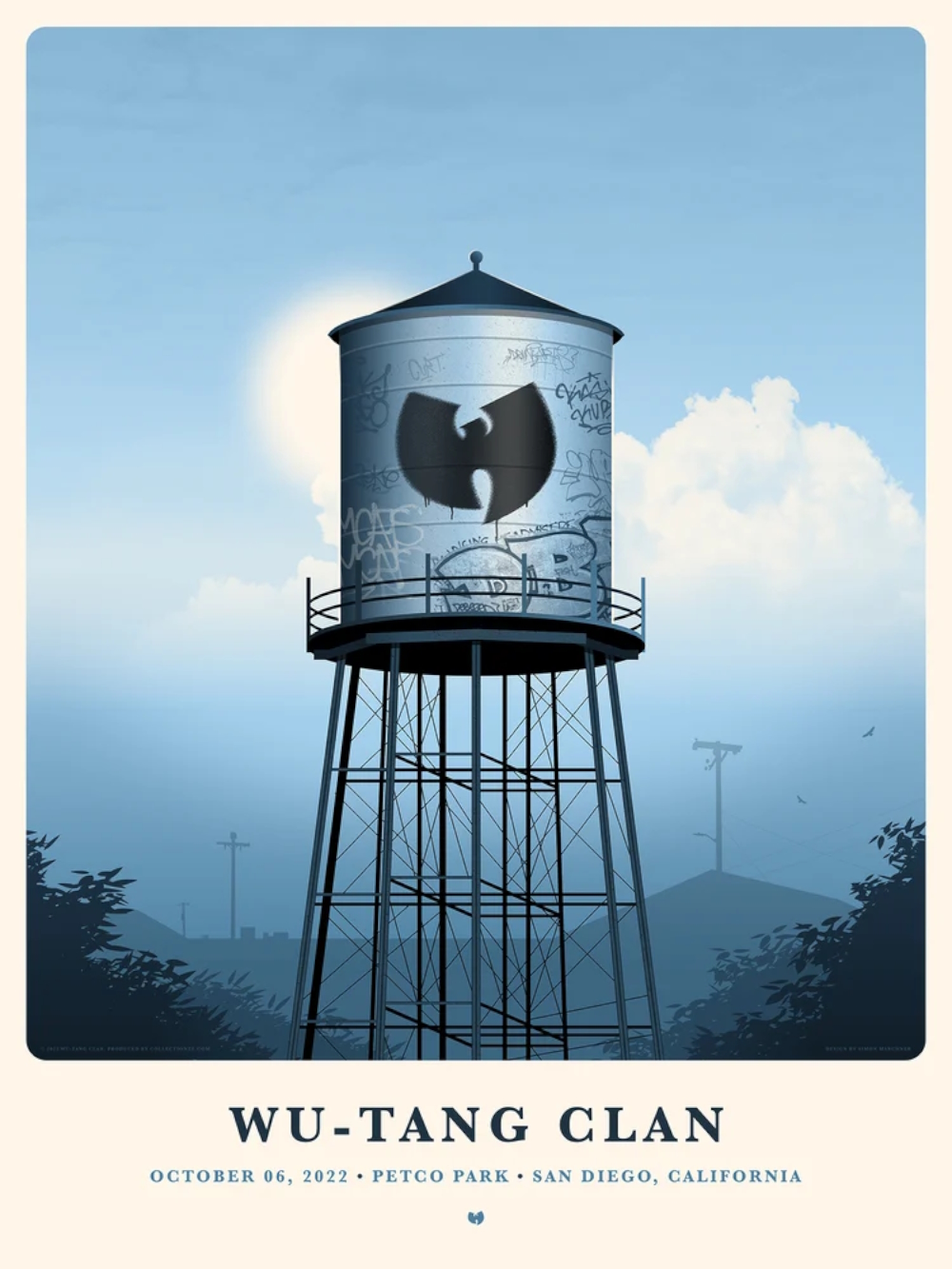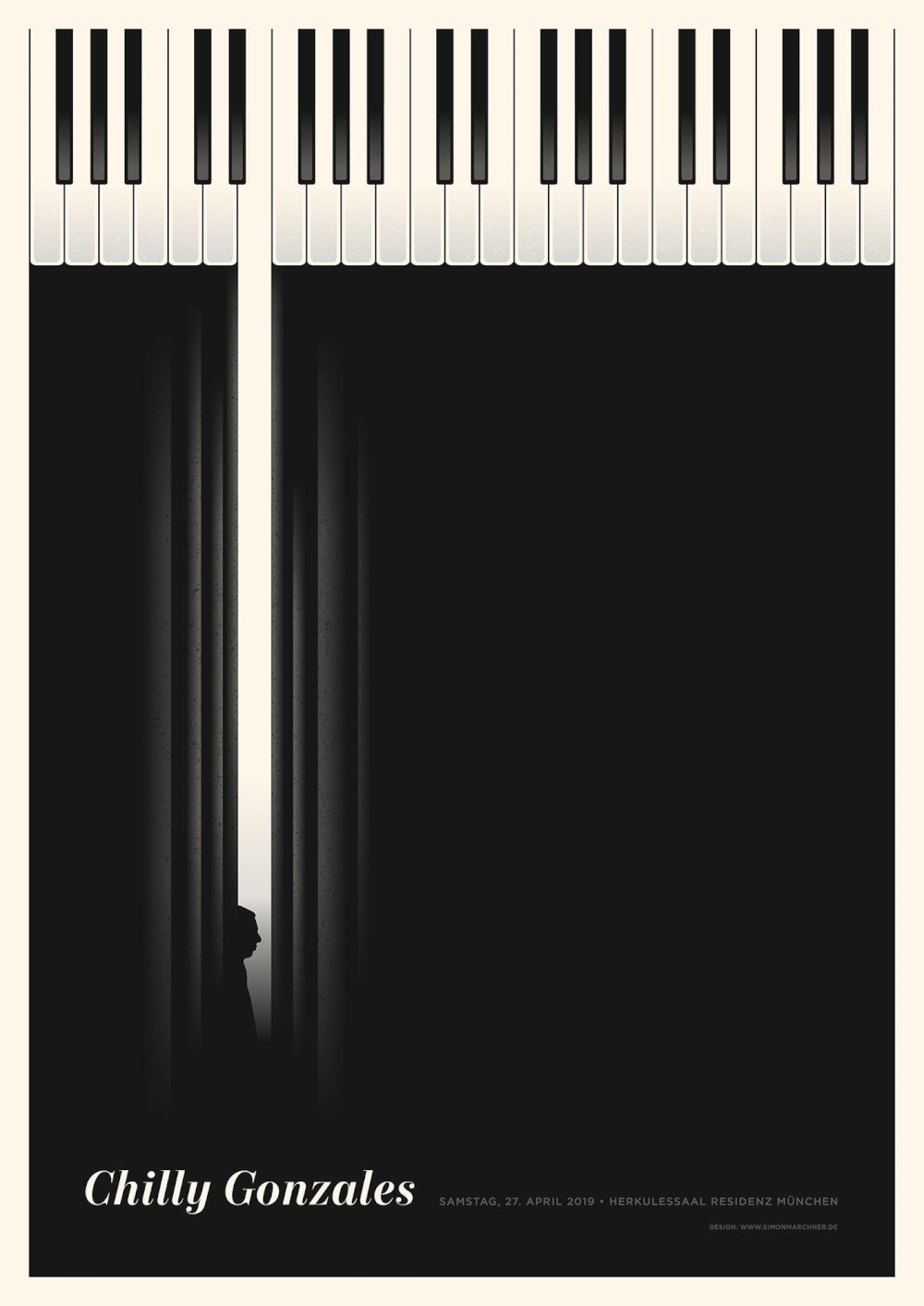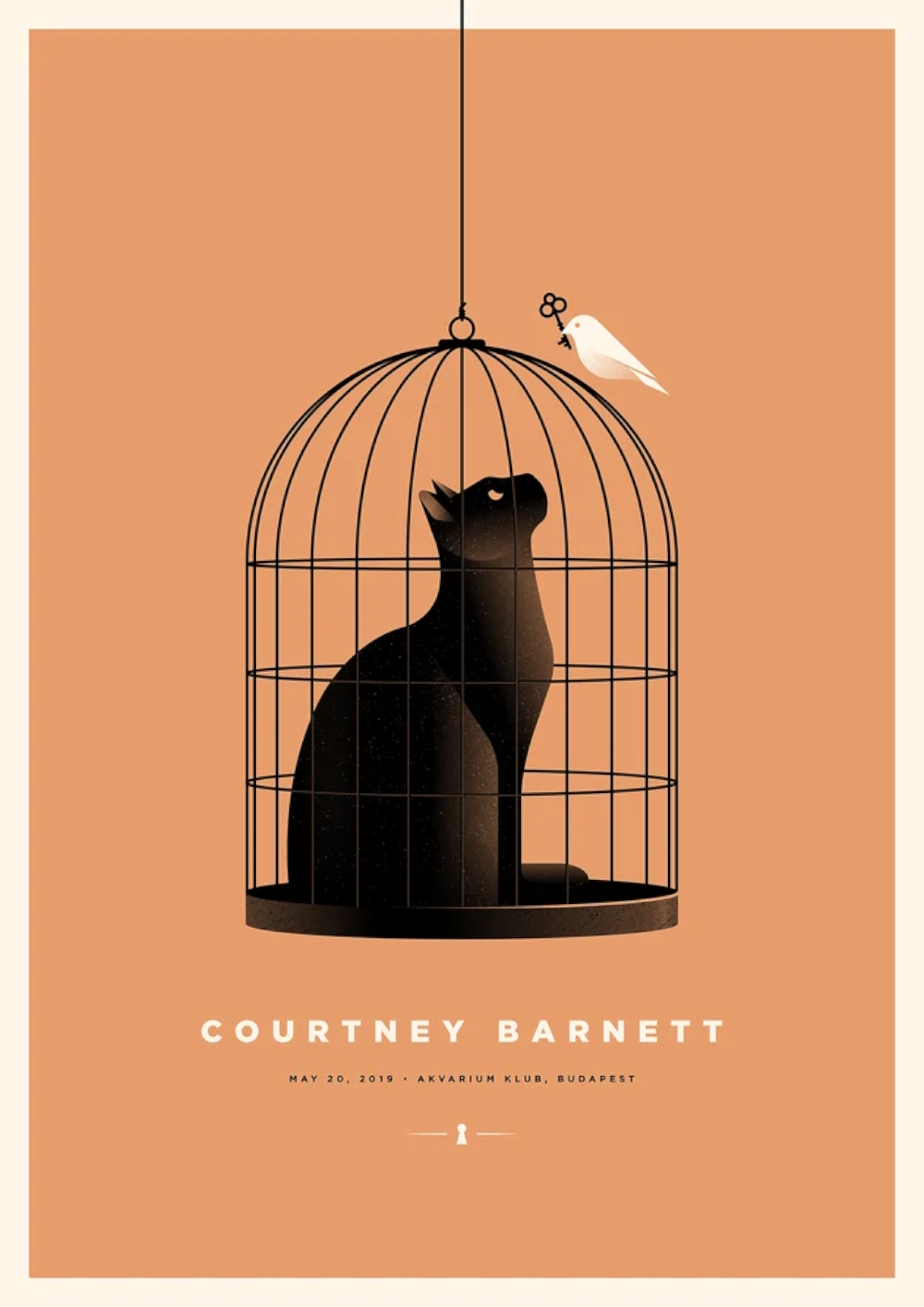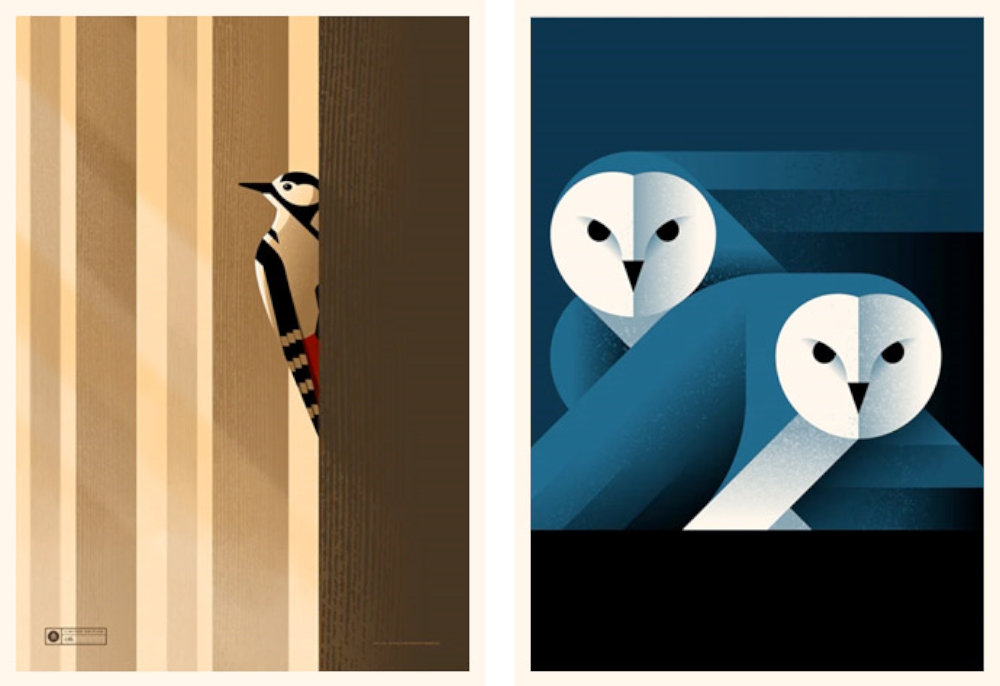Simon Marchner
Graphic Designer / Illustrator
Germany
The Rolling Stones. The Who. The Eagles. Elton John. The Cure. Foo Fighters. Muse. Wu-Tang Clan. For these world famous acts and many more this native Bavarian who specializes in music related designs has created concert-/tour-posters - not for announcing gigs, but the numbered and signed art print-collectibles are sold on the evening of the show at the merch stand. Typical for his very special, striking style are „distinctive use of light and shade, clean lines and graphic shapes create atmospheric compositions, often with a minimal colour palette“, states meiklejohn.co.uk. There „you find an environment of absolute mood“, adds eviltender.com. „The shapes are crisp, perfect beyond the real world. His is a purposeful form of minimalism, bypassing cleverness for stark realism.“ Despite the fact that the works look timeless-modern, his limited editions (70-200) are all handmade by the self-proclaimed perfectionist on an old silkscreen printer!
Simon Marchner
Graphic Designer / Illustrator
Germany
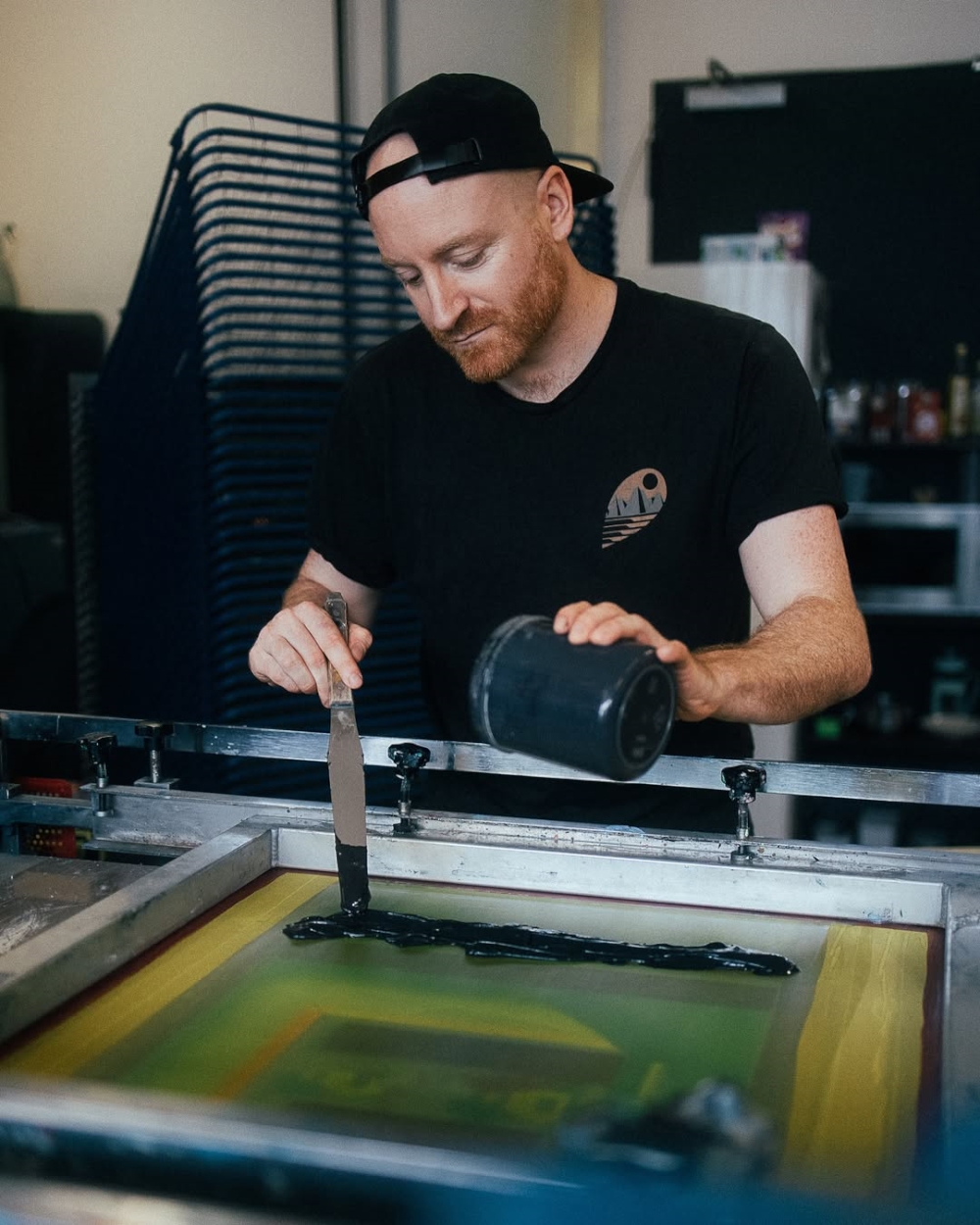
Starting at his parents‘ garage in a small town up to deals with international biggies: considering that Simon Marchner has pursued an impressive career that’s distantly reminiscent of Silicon Valley legends somehow too.
Already as a kid, growing up in Lower Bavaria, he was found of drawing – mostly animals like owls or butterflies. At the age of 14 Simon (* February 9th, 1989 in Eggenfelden, Germany) created the covers for his self-burned cd-samplers. In the years to come the young man‘s creativity made the leap from his own four walls into the public eye when the Punk- & Indie-fan designed flyers for school parties, posters for a local music club or befriended bands. When he was 18/19 years old, the skater and sprayer wanted to become a professional tattoo-artist. To learn the first steps of the trade he traced the works by Frank Shepard Fairey (founder of OBEY clothing and popular for the Barack Obama ‚Hope‘ poster later). Then his yardstick was Jason Munn, whose minimalistic and Bauhaus-like poster designs „focus on images that are concept-driven and restrained, often keeping only what is essential to the composition“ (sfmoma.org). By the detour of constant copying Simon Marchner found his own language of form step by step and decided to put all on solid footing for the vision to become a self-employed artist one day.
From 2012 to 2016 the talented twen studied communication design at Munich’s University of Applied Science. At the in-house workshop he developed his love for screen printing. This is a „technique where ink is forced through a mesh screen (originally silk, now also artificial material) onto a surface to create a picture or design“ (Oxford Dictionary). „One colour is printed at a time, so several screens can be used to produce a multi-coloured image or design“ (Wikipedia). Even if one reduces the designs to the essence and works with fewer colors like Simon Marchner does it’s a time-consuming, complex procedure still. In any way it is worth the effort as each artwork differs slightly from the other due to the way it is printed. Therefore all the handmades are entirely unique originals!
At his tiny studio „every poster begins as a simple sketch. Analog. Pen and paper“, notes woodlandstudio.be. „The final art is born in the computer, which he digitally edits, combines and finally adds textures, before returning to the analog world to prepare the screens, selecting the paper, mixing the colors and starting to print himself.“ For remaining copies (in DIN A 2 mostly) check the shop on the artist‘s website.
By word of mouth one thing lead to another and Mr. Marchner’s thought-out, aesthetic, focused, clear, clean and quiet design style got around. Regarding his poster artwork he can now look at an impressive list that features lots of legends from a wide variety of music genres. Besides that the enthusiastic runner („Nine to ten kilometers in the morning to clear my head prior to work“, ohnedenhype.de) also does graphic work on commission like book covers or company logos. A very special task for him was designing 23 different covers for the limited edition of the boxset ‚Distortion: 1989-2019‘ by the American vocalist/guitarist Bob Mould (of alternative rockers Hüsker Dü fame).
Simon Marchner works and lives in Munich, Germany.
Interview November 2025
From analog to digital and back: craftmanship, love for minimalism and an old manufacturing process melt into a style of high recognition value
INTUITION/IMAGINATION
?: How does intuition present itself to you – in form of a suspicious impression, a spontaneous visualisation or whatever - maybe in dreams?
It happens spontaneously. There’s no universal recipe for it. There are tricks and tools that can help guide the flow in the right direction, but if I had a formula, it would make things much easier.
?: Will any ideas be written down immediately and archived?
Not always. Often, the quality of an idea only reveals itself during the process or execution. Practical ideas, however, I do document. There are different methods for that: sketches, moodboards, or simply saving ideas on platforms like Pinterest or Instagram.
?: How do you come up with good or extraordinary ideas?
By thinking a little further than the obvious idea. Of course, there’s no recipe for this either. Sometimes it can be overthought, and then the context gets lost. It’s a matter of “intuition” or feel.
?: Do you feel that new creative ideas come as a whole or do you get like a little seed of inspiration that evolves into something else and has to be realized by endless trials and errors in form of constant developments until the final result?
It mostly emerges during the process. The first ideas are like sparks that gradually ignite the fire.
?: What if there is a deadline, but no intuition? Does the first fuel the latter maybe?
Deadlines are often important to channel and focus the flow of thought. But if the pressure is too high, it can also be counterproductive. Ideally, a balanced amount of pressure supports the creative process.
INSPIRATION
?: What inspires you and how do you stimulate this special form of imaginativeness?
Above all, nature. Animals, landscapes, lighting moods, etc. Less urban life, although I appreciate that too. But the calm, balance, and rawness of nature inspire me most.
?: How do you filter between ideas that are worthwhile pursuing and bad ones that you just let go of?
You learn that through the process. Some ideas work, others don’t. Over time, you get a sense of which ideas can be dropped and which should be pursued.
?: Does an idea need to appeal to you primarily or is its commercial potential an essential factor?
It’s both. To be honest, I am also, in part, a service provider and not just a free artist. Of course, I also take on purely commercial projects, as long as I can identify with their values.
?: Do you revisit old ideas or check what colleagues or competitors are up to at times?
Of course. Some ideas simply need the right time or project to come to life. And naturally, I look at what colleagues or other artists are doing. I absorb everything and reinterpret it with my own methods.
CREATIVITY
?: What time or environment best suits your creative work process — for example, a time and place of tranquility or of pressure?
Quiet helps to get the creative process started. Pressure helps to finish it or bring it into form. Ideally, a mix of both works best.
Which path do you take from theory or idea to creation?
I start with loose sketches and drafts, then move on to more developed digital sketches where I make layout and color decisions, and finally elaborate them digitally.
?: What’s better in the realization process — for example, speed and forcing creativity by grasping the magic of the moment or a slow, ripening process for implementation and elaboration?
Forced creativity doesn’t exist for me. I need to get myself into a state where I naturally enter that flow of inspiration and creativity.
?: How important are self-doubt and criticism by others during such a process?
Self-doubt is like a devil on the shoulder — it’s always there. Ideally, this voice isn’t too loud and is more self-critique than doubt. Constructive criticism from others during the process is not very helpful, but afterwards it can be.
?: Is it better to be creative on your own, to trust only your own instincts, or to work in a team?
I work better alone, or at least in a setup where everyone has their clearly defined area.
?: In case of a creative block or, worse, a real failure, how do you get out of such a hole?
Take a deep breath. Jog, exercise, go outside, distract yourself. Shift perspective. Get back to good thoughts.
?: Should a creative person always stay true to him- or herself, including taking risks and going against the flow, or must the person, for reasons of commercial survival, make concessions to the demands of the market, the wishes of clients and the audience’s expectations?
In my case, both. I am a service provider, but I still need to stay true to myself.
?: How are innovation and improvement possible if you’ve established a distinctive style? Is it good to be ahead of your time, even if you hazard not being understood?
It’s always trial and error. Even if you have developed a style or direction, it’s important to step out of your comfort zone. Only then can you develop further.
?: When does the time come to end the creative process, to be content and set the final result free? Or is it always a work-in-progress, with an endless possibility of improvement?
For client projects: always the deadline or submission date. For personal projects, you have to set your own goal.
?: How does artificial intelligence change human creativity? And do you? Would will you use it at all?
Of course, I use AI nowadays. It would be naive to refuse it completely. But not as an execution tool in my work — I don’t generate posters or motifs with it. It helps me in certain steps like idea generation, research, information processing, and speeding up tedious or time-consuming tasks.
SUCCESS
“Success is the ability to go from one failure to another with no loss of enthusiasm.” Do you agree with Winston Churchill‘s quote?
Yes, to some extent, that’s true. Failures are important in the process. However, the failures shouldn’t be huge mistakes, but manageable.
?: Should or can you resist the temptation to recycle a ‘formula’ you're successful with?
I’d say every artist has a few “formulas” they fall back on because they work or are successful. That’s partly what some people understand as “style.” But you shouldn’t rely solely on it, otherwise you become generic.
?: Is it desirable to create an ultimate or timeless work? Doesn’t “top of the ladder” bring up the question, “What’s next?” — that is, isn’t such a personal peak “the end”?
I don’t worry about that. The journey is the goal, and what counts as a “personal peak” is determined by others, or you can only assess it retrospectively.
MY FAVOURITE WORK:
I would choose my poster for the band The National from 2022. Stylistically, it shows everything I love: nature, melancholic (lighting) moods, a reduced, minimalist approach, yet with depth. And it’s for one of my favorite bands, whose sound I feel I captured well here.
